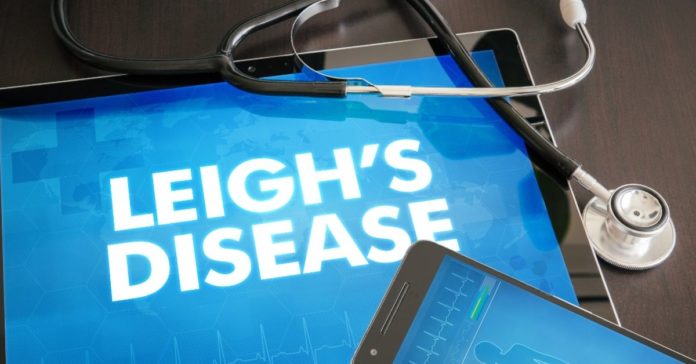Overview
There are many medical conditions that occur rarely and have a poor prognosis. Leigh’s disease is one such disorder.
This blog is a comprehensive guide to Leigh’s disease, its symptoms, causes and the treatment options available.
What is Leigh’s Disease?
Leigh’s disease is an inherited disease that mainly occurs between 3 months to 2 years of age and sometimes manifests late in teenagers and adults. It is a neurometabolic condition that affects the central nervous system. The symptoms of this disorder rapidly progress as the child ages. This disorder usually begins when the child is between three months to two years. Parents, caregivers, or family members start noticing the signs in the first year of birth, typically after a viral infection. Some early signs may include loss of head control and motor skills and poor sucking ability. However, as the disease progresses, severe symptoms such as respiratory impairment and low kidney function occur.
Leigh’s disease is also known as Leigh’s syndrome. Many different enzyme defects owing to genetic reasons can cause this disease. Many people with Leigh syndrome have defects in production of mitochondrial energy, including deficiency of an enzyme of mitochondrial respiratory chain complex or pyruvate dehydrogenase complex.
What are the symptoms of Leigh’s Disease?
Leigh’s disease is characterised by symptoms which progress as time passes. Some earliest signs of this disorder are loss of appetite, irritability, poor suckling ability, and loss of head or motor control. The children may cry continuously and may experience seizures. They may also experience weakness, lactic acidosis, or a lack of muscle tone. However, the symptoms differ for each person. Some of the other symptoms are as follows:
- Abnormal motor skills: As the central nervous system is affected, patients with Leigh’s disease suffer from uncoordinated and involuntary movements.
- Low muscle tone: Patients also experience muscular hypotonia, otherwise known as low muscle tone. It shows signs during infancy.
- Loss of developmental skills: Leigh’s disease affects the brain cells. Therefore, patients either do not reach the required milestones or there is a degeneration of already acquired developmental skills.
- Failure to thrive: When the physical growth of the children is below the expected level is known as failure to thrive.
- Difficulty in feeding: Patients suffer from eating-related issues such as sucking, chewing, or swallowing food.
- Uncontrollable movements: In Leigh’s disease, a child may experience involuntary muscle contractions that lead to involuntary movements of the neck, trunk, or face.
- Congestive heart failure: The failure of the heart to pump at a regular rate is often related to a defect in myocardial contraction.
- Respiratory failure: When the lung cannot adequately exchange oxygen and carbon dioxide within the normal range, it is called respiratory failure.
If you notice any of the above-mentioned symptoms of the disease, seek medical help immediately.
How is Leigh’s disease diagnosed?
A rare condition such as Leigh’s disease is challenging to diagnose, as each symptom can be related to various other diseases, and there is limited information about the condition. However, the doctor may conduct the following:
- Medical history and physical exam: The first step to diagnosing any medical condition is getting the patient’s medical history by asking relevant questions. The doctors may also discuss current and past medications, allergies, family medical history, and the results of previous tests and procedures. Afterwards, the doctors conduct a physical exam to check the vitals, neurological system , possible pain in any parts of the body, and abnormalities.
- Genetic testing: It is prescribed to observe any changes in the DNA known to cause the disease or other medical issues.
- Investigations : Procedures such as EEG are conducted to study brain activity, that may help the doctor accurately determine a diagnosis. MRI is one of the imaging tests that helps in accurately diagnosing the condition.
- Laboratory tests: The doctor takes a sample of the blood, urine, or body tissue to check for signs of medical problems. The results help in diagnosing the condition and preparing a management plan.
What is the cause of Leigh’s disease?
Leigh’s disease can be caused by a deficiency of one or many different enzymes, such as enzyme of mitochondrial respiratory chain complex or pyruvate dehydrogenase complex). The deficiencies of these enzyme are due to mutations (changes) in one of many different disease genes (genetic heterogeneity). Such mutations are usually inherited as mutation found within the DNA of mitochondria, or as autosomal recessive trait (X-linked recessive trait). In certain cases, no genetic cause can be identified.
Is there treatment for Leigh’s Disease?
While treatment recommendations are primarily based on case reports, open label studies and personal observations, there are no proven treatments for Leigh Disease of any type. The Leigh syndrome treatment is directed at the specific symptoms that are evident in each individual. Treatment or Leigh’s Disease require coordinated efforts from a team of specialists. Neurologists, cardiologists, pediatricians, eye specialists, audiologists (pecialists who diagnose and treat hearing problems ), and other health care professionals have to plan an effective treatment systematically and comprehensively for the child.
Administration of thiamine (Vitamin B1) or thiamine derivatives is the most common treatment for Leigh syndrome.
Frequently Asked Questions
What are the chances of recovery from Leigh’s disease?
The prognosis for people with Leigh’s disease is poor. People who lack mitochondrial complex IV activity and individuals with pyruvate dehydrogenase deficiency tend to have worst prognosis and die within few years.


















